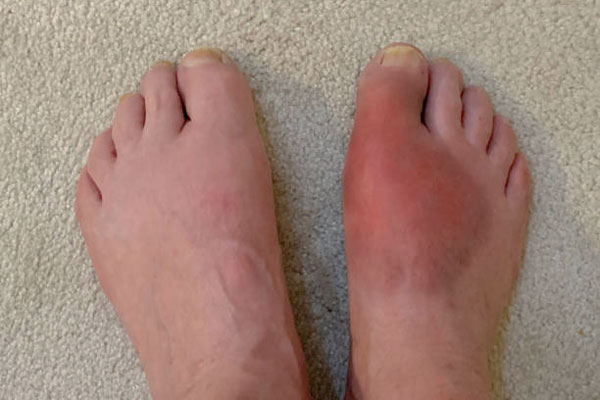Osteotomy of the Big Toe
Foot deformities are conditions involving structural abnormalities or muscular imbalances that affect the normal function of the foot and its appearance. There are several conditions that lead to foot deformities like bunions (bony bumps), forefoot disorders such as rheumatoid diseases, etc. The most recognizable foot deformity is the deformity of the big toe, which causes pain after a long walk or restricts your flexibility and mobility in your daily activities. Though there are different types of surgeries to correct the misalignment of the big toe, osteotomy is the most common correction surgery for foot deformities.

What is an osteotomy of the big toe?
Osteotomy of the big toe is a surgical procedure that cuts and reshapes the parts of the big toe in your foot. It aims to relieve pressure from a deformity or injury. Bringing the big toe back to its normal position may involve realigning the bone, ligaments, tendons, and nerves.
When is osteotomy of the big toe recommended?
There are several indications for big toe osteotomies; the most common are:
- Significant foot pain that limits normal activities, including walking or wearing shoes.
- A severe big toe inflammation and swelling that does not improve with non-surgical treatments.
-
Any deformity of the toe may restrict the normal functions of the toe. Major deformities of the big toe are:
- Hallux valgus (the big toe drifts to the outer edge of the foot and crowds the small toes)
- Hallux rigidus (a form of degenerative arthritis that causes pain and stiffness in the big toe)
- Forefoot disorders, such as rheumatoid diseases.
What are the pre-procedure care for the surgery?
An X-ray imaging test of your foot will be performed before the surgery, as the X-ray images will help your surgeon plan your surgery. Before undergoing the surgical procedure, you have to follow certain instructions from your healthcare provider, some of which are given below:
- Temporarily stop taking some medications before the procedure.
- Do not eat or drink anything after midnight on the day of your procedure.
- Arrange for someone to drive you home and assist you after surgery.
- Stop smoking and drinking, as it may prolong the recovery time after the surgery.
In addition to the above instructions, you may also be instructed to make some lifestyle modifications, like weight management, for those who have a high BMI.
What will happen during surgery?
An IV (intravenous) line is inserted into a vein in your arm prior to the start of the procedure. Anesthesia is administered through this IV line. The type of anesthesia depends on the surgical procedure. You may be given either general anesthesia (which puts you to sleep throughout the procedure) or local anesthesia (which numbs a specific area) along with a sedative (medicine to help you relax). Once the anesthesia is administered, the procedure commences as follows:
- An incision is made on your foot over the area to be fixed.
- This cut will expose the bones on the toes and the connective tissues (tendons and ligaments) around them.
- If there are abnormalities in the joint, a small cut is made in the bones, and this new break is fixed using pins, screws, or metal plates. This will make the bones straight and balance the joint.
- In some cases, a small wedge of bone is removed (in addition to the cutting of bone) to provide enough space to straighten the toe.
- If the big toe bone has a bony bump, the bump is removed using a bone saw, with which the big toe bone is shortened and realigned.
- Once the procedure is complete, the incision will be closed with stitches, and a bandage will be placed over your foot.
What is the post-procedure care?
You will be sent to the recovery room shortly after the treatment. As the effects of anesthesia wear off, medicines are given for short-term pain relief. You should wear a brace or a special surgical shoe to protect your foot while it heals. Before going home, your surgeon may give you certain instructions that should be followed during your recovery at home. It includes:
- Keep your leg in an elevated position to avoid swelling.
- Use crutches or a walker to keep the weight off your foot.
- Keep the surgical dressings and bandages clean and dry to avoid infections.
- Avoid putting weight on your foot or stopping using supportive devices without any instruction from the surgeon.
- Exercise regularly as instructed by the physiotherapist to restore your foot's strength and range of motion after surgery.
It may take several months for your bones to fully heal. Your surgeon will advise you to slowly return to your normal activities and continue wearing the surgical shoes until the bones have completely healed.
Outlook
Osteotomy is a procedure used to shorten or lengthen a deformed bone that doesn't line up with a joint as it should. Osteotomy of the big toe aims to bring back the normal flexibility of the joint and correct the deformity. The procedure is highly successful, and most patients are happier with the overall shape and function of their feet. Once the healing has occurred and the swelling is resolved (around 6 months later), the patient can comfortably fit into shoes.